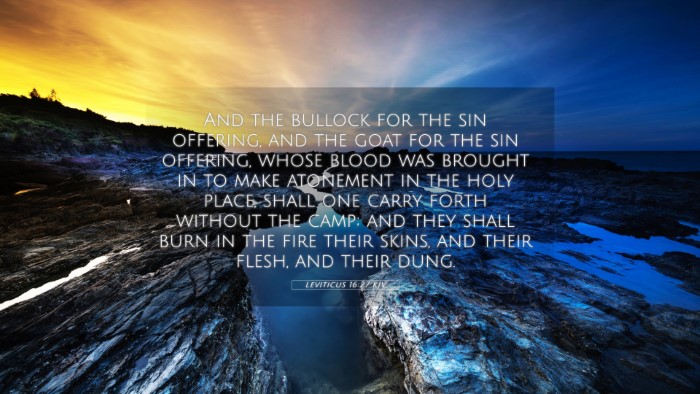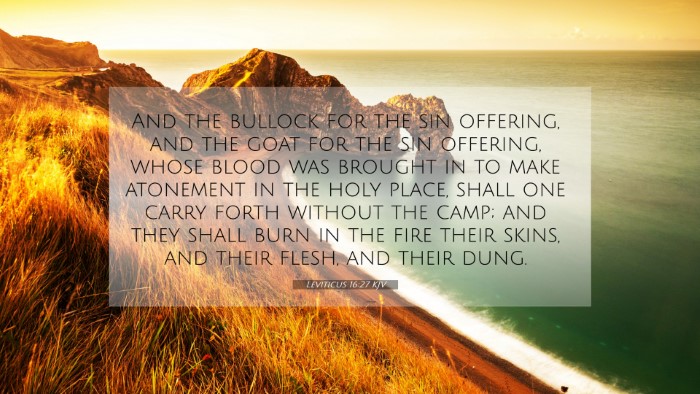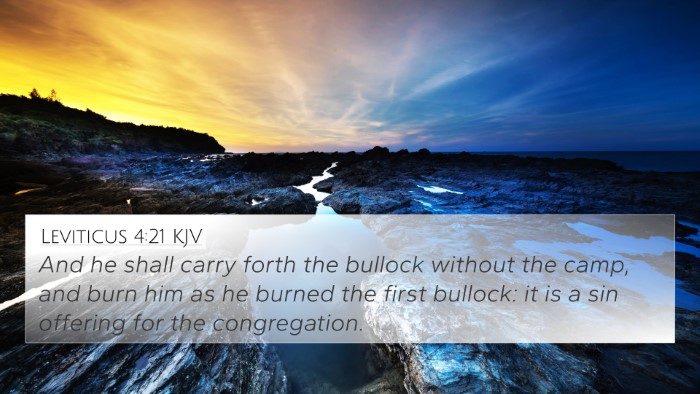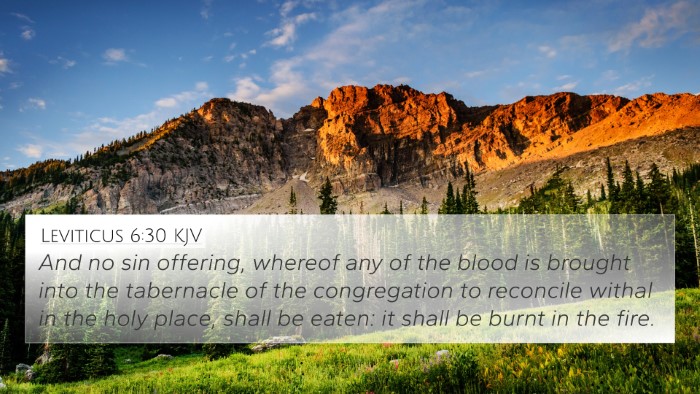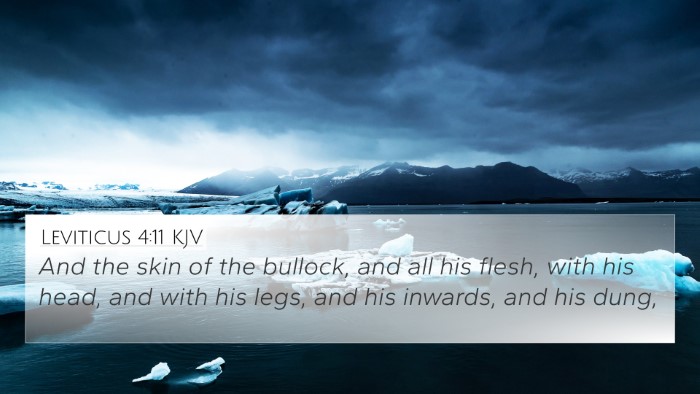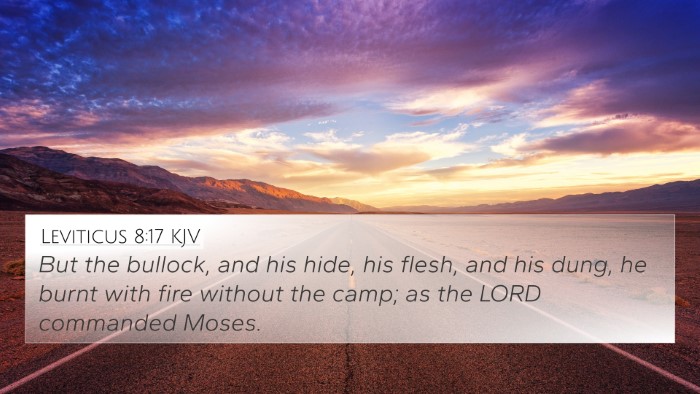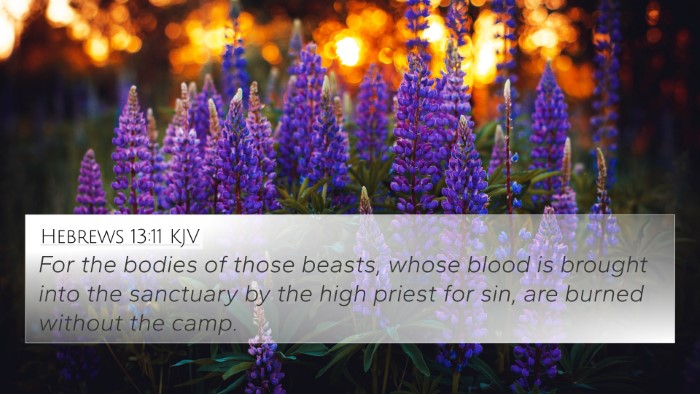Understanding Leviticus 16:27
Leviticus 16:27 states: "And the bullock for the sin offering, and the goat for the sin offering, whose blood was brought in to make atonement in the holy place, shall be carried forth without the camp; and they shall burn in the fire their skins, and their flesh, and their dung." This verse encapsulates a key element of the Day of Atonement ritual, shedding light on the gravity and holiness of atonement in the ancient Israelite community.
Significance of the Sacrifice
The sacrifices referenced in this verse serve as a profound reminder of sin and the necessity of atonement. Matthew Henry notes that the sacrifices were not mere rituals but acts filled with deep significance, symbolizing the serious nature of sin and the need for purification.
The Role of the Blood and Atonement
Albert Barnes emphasizes that the blood of the sacrifices, brought into the holy place, signifies life and cleansing. This act illustrates a powerful connection to the New Testament theme of Christ's sacrifice, where His blood brings ultimate atonement for sin, making a permanent way for reconciliation with God.
Outside the Camp: Symbolic Implications
Adam Clarke points out that carrying the carcasses outside the camp signifies separation from the community and the holiness required in the presence of God. This act symbolizes the literal and metaphorical removal of sin, akin to Christ’s own journey outside the city to bear the sins of humanity.
Biblical Cross-References
Leviticus 16:27 connects with several other scriptures, providing greater insight into themes of atonement and sacrifice:
- Hebrews 13:11-13: The connection to Christ’s sacrifice outside the city gates.
- Exodus 29:14: The incineration of sin-offerings highlights the seriousness of sin’s consequences.
- Romans 6:23: The wage of sin is death, echoing the necessity of atonement.
- 1 Peter 2:24: Christ bore our sins, drawing a parallel with these sacrificial practices.
- Leviticus 4:12: Similar instructions for handling sin offerings that help establish the pattern of atonement.
- Ephesians 1:7: Highlighting the ultimate sacrifice of Christ and the redemption through His blood.
- Isaiah 53:6: Illustrating that all we like sheep have gone astray, and He bears the iniquities.
Connections Between Bible Verses
This verse serves as a thematic pivot that connects Old and New Testament understandings of sacrifice.
- John 1:29: Demonstrating Jesus as the Lamb of God who takes away the sins of the world.
- Matthew 5:17: Jesus fulfilling the law, showcasing the transition from Old Testament sacrifices to His ultimate sacrifice.
Inter-Biblical Dialogue
Cross-referencing these scriptures enriches our understanding of God’s redemptive plan. Each verse weaves a tapestry that reveals God’s consistent message of atonement and grace throughout the Bible. Utilizing tools for Bible cross-referencing, such as a Bible concordance or cross-reference guide, can greatly aid in discovering these hidden connections.
Tools for Bible Cross-Referencing
Studying the connections between Bible verses is crucial for comprehending intricate scriptural themes. Some tools to enhance your cross-referencing studies include:
- Bible concordance
- Bible cross-reference guide
- Cross-reference Bible study methods
Conclusion
In conclusion, Leviticus 16:27 serves not only as a historical account of sacrifice but as a foundational verse linking the Old Testament practices with the New Testament revelation of Christ’s ultimate sacrifice. Understanding these connections enriches our faith and appreciation for the way the entire Bible interrelates, revealing a unified story of redemption.

